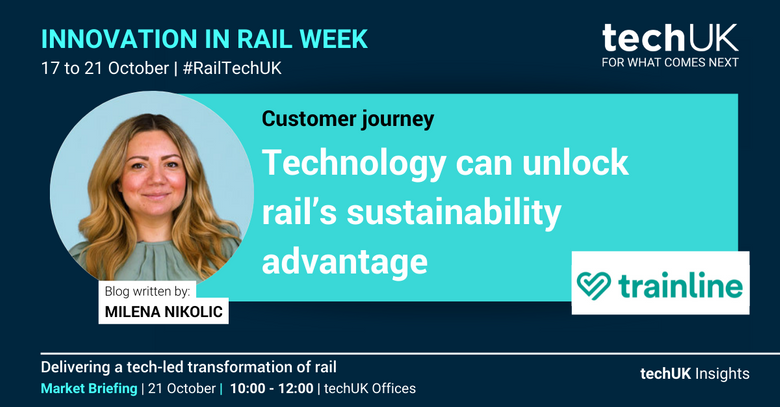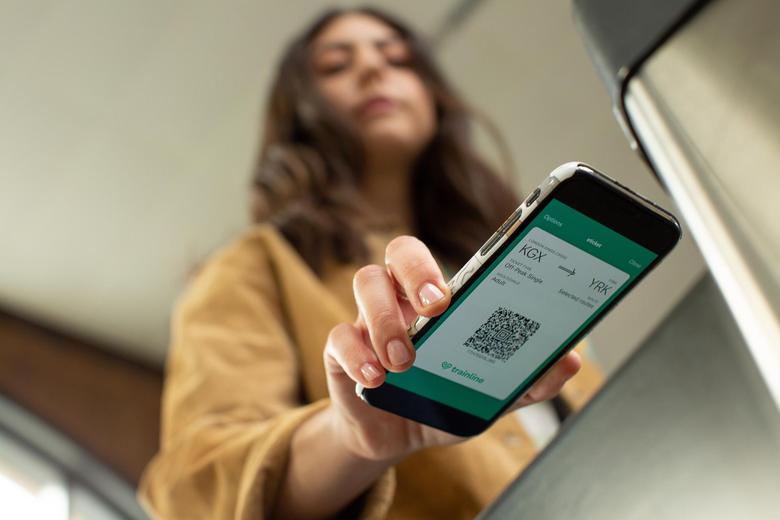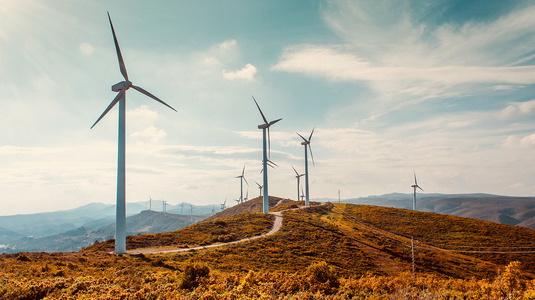Technology can unlock rail’s sustainability advantage (Guest blog by Trainline PLC)

When historians look back at 2022 in the decades to come, will they say that this was the year that sustainability went mainstream? Seismic shocks to our collective attitudes, whether motivated by the cost-of-living crisis or the impact of extreme weather events, have ensured the green agenda is now firmly established as a political and social priority.
With train travel producing less than 1/20th of the CO2 emissions of air travel, and 1/7th of the emissions of car travel per passenger, the rail industry has an opportunity – and a responsibility – to attract more travellers onboard.
That’s easy enough in theory, but how do we succeed in practice?
For me, the answer lies in the power of technology to excite people about train travel –making it a no brainer to choose rail over other modes.
The rail industry has a complex product on offer, with countless variables from peak restrictions to discount offers affecting prices from each of the UK’s 2,500+ stations.
Only technology can sell to the customer at the key decision-making stage, while they are still sat on their sofa considering their journey options, and make rail the simple, attractive choice. Even more so in the wake of the pandemic, which has accelerated both the shift to online purchasing, but also the expectations of customers that their desired product should be available to buy, when and where they want it.

Technology can simplify that bewildering complexity of rail, unlocking savings and delivering the value that customers yearn for – indeed we calculate that UK travellers can save 35% by booking through Trainline, when taking advantage of our smart money-saving features and digital railcards. Customers also get a huge amount of value from a personalised experience, which helps them identify more ways to save – not to mention, a simple, uncluttered and user-friendly interface that distils multiple options into the journey that reflects the best balance of journey time, convenience and price.
Tech delivers simplicity, and therefore value to both customer and industry, in ticket fulfilment too. For example, we’ve seen an explosion in use of mobile ticketing in recent years. Barcode tickets have rocketed to overtake the old-fashioned paper ticket as the UK rail industry’s number one channel by value – even though they aren’t yet available on significant sections of the network (though those remaining gaps are rapidly being closed).
Four years ago, barcodes made up less than one-fortieth of sales revenue; today it is well over 40%. When we offer Trainline customers the choice between a mobile barcode or a paper ticket, 99% choose the digital option.
Through tech, ticketing becomes simpler, quicker, and crucially it is trusted.
That simplicity is even more important when there are multiple operator options on the same route. In continental Europe in particular, we’ve seen a proliferation of new train operators entering the intercity high-speed market – seven of the ten busiest rail routes in Europe now have competition between different train operators. When that competition exists, often its only aggregator platforms like Trainline that can offer customers all the travel options, irrespective of operator.
And through the aggregation power of tech, we can unlock spectacular results. As I write this, I’m in France and travelling from Paris to Lyon. Since last December, there has been a choice of three train operators that serve this route – SNCF’s TGV service and their budget Ouigo option, and new entrant Trenitalia. As a result, ticket prices have fallen by up to an incredible €43. It’s access to simple, easy-to-use online aggregation that helps enable this saving, helping customers to identify and take advantage of the best price on offer from any operator. Meanwhile demand has soared, with nearly 60% more passengers travelling over just nine months.
As rail becomes more popular, it attracts more travellers away from higher-polluting options like car or air. This is neatly demonstrated by the Rome-Milan route in Italy, one of the three busiest in Europe with rival operators Trenitalia and Italo. Across a decade of competition, the modal share of rail grew from 36% to 75%, which aviation dropped from 50% to 17% and road use nearly halved.
Across Europe, hundreds of thousands of railway staff work hard on a daily basis to deliver a punctual, reliable, attractive and sustainable passenger service.
And it’s technology that is key to attracting more customers onboard these services, by increasing ticket sales, getting people more excited about choosing rail – and maximising those sustainability benefits.
Get involved with our work
All of techUK’s work is led by our members – keep in touch or get involved with our work on transport and infrastructure by joining our groups.



